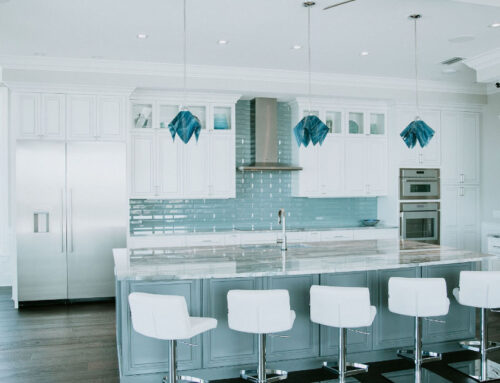Pollinators are a critical part of our agricultural and environmental ecosystems. In fact, bees alone are responsible for pollinating more than 120 types of fruit and vegetable crops and 80% of all flowering plants. Due to development and land conversion, many pollinators are experiencing a habitat crisis. But homeowners can help significantly, by incorporating pollinator-friendly landscaping into their outdoor living space. A bee and butterfly pollinator garden can be a gorgeous addition to your backyard, and give you a reason to transform your back deck into a living space all of its own.

Landscaping for pollinators isn’t just great for our insect friends – it also makes maintaining your garden much easier for you to do. The main concept of pollinator gardens is to fill them with native plants. Florida native plants evolved so that they are perfectly adapted to our specific climate, meaning that once they are established there is little that you have to do to tend to them. You will save a considerable amount of time and money by not having to frequently water a garden filled with nonnatives.
How to Start a Pollinator Garden
- Choose the area where you will have your pollinator garden. Perhaps you want to start with just one bed for now, or maybe you are willing to take the plunge and convert all of your landscaping beds. Either way, you will need to remove the current vegetation that is present and cover the beds with cardboard or plastic sheets for a few weeks to a couple months. By covering the soil, you kill any weeds that might have started germinating, leaving you with a fresh and weed-free patch of soil in which to sow your native wildflower seeds. It is best to do this during the summer, when most weeds start germinating and growing.
- Come fall (October – December), spread your native wildflower seeds in the bed. You don’t need to worry about burying them; simply mix the seeds with a bit of wet sand or compost to help weigh the lighter seeds down as you throw them into the garden bed.
- Leave it alone! The seeds will overwinter there in the garden bed, then as the weather turns in spring they will begin popping up. All you have to do is keep an eye on the bed and remove any weeds that try to encroach on the area.
- If you instead choose to spread wildflowers in the spring, you can still get a pollinator garden going. Just be sure to water the area heavily each day to keep the soil moist until the wildflower seedlings are a few inches tall.
Choosing Your Wildflowers
It is best to choose a variety of colors, shapes, and sizes when selecting which wildflowers to plant. The greater variety you have, the more pollinators you will attract to your yard. Some of the most popular native plants for South Florida include:
- Milkweed
- Partridge pea
- Goldenrod
- Passionflower
- Blazing star
- Black-eyed Susan
- Beautyberry
- Beach sunflower
- Blanketflower
- Columbine
- Carolina jessamine
Any mix of these and other native wildflowers will bring many pollinators to your yard. The insects will thank you, and your vegetable and fruit gardens will thrive due to the presence of these pollinators.
West Coast Design Build Florida understands the impact of a beautiful backyard – we spend every day helping Sarasota residents to achieve just that! From outdoor gourmet kitchens to beautiful decks, our designers and installers are here to help you bring your dream outdoor living space to life. Call today for a consultation.


